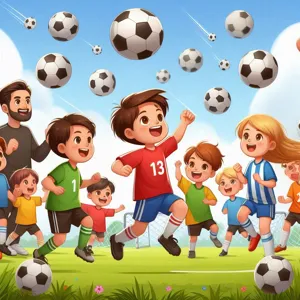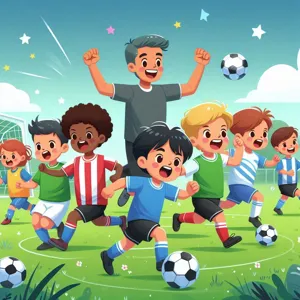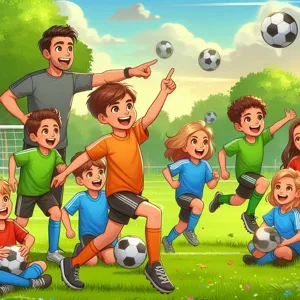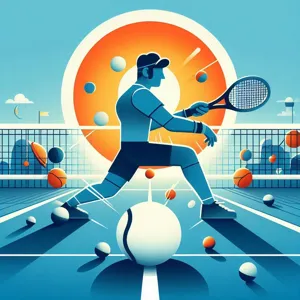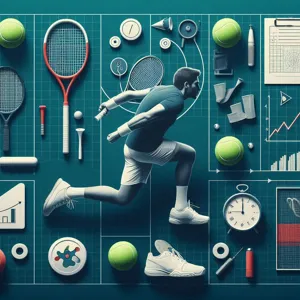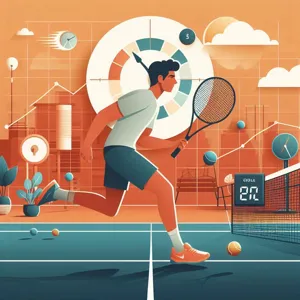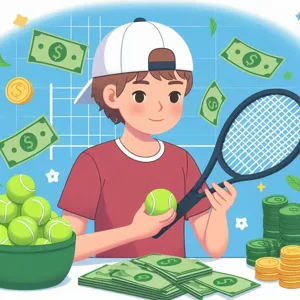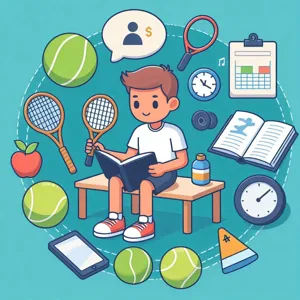Whether you’re a seasoned player looking to refine your technique or a beginner eager to learn the fundamentals, mastering the art of dribbling is essential for elevating your basketball game.
Dribbling is not just about bouncing the ball; it’s about control, agility, and creativity on the court. The right drills can transform your handling skills, enabling you to navigate through defenses with finesse and confidence. In this blog post, we’ll explore the top drills designed to enhance your dribbling abilities, focusing on improving footwork, speed, and ball control. With each drill, you’ll unlock new levels of skill and sophistication, helping you to break ankles and drive to the basket like a pro. Lace up your sneakers and get ready to take your game to new heights as we dive into the world of effective dribbling drills that will leave your opponents in the dust!
1. Introduction: The Importance of Dribbling in Basketball

Dribbling is the lifeblood of basketball; it’s the skill that transforms a stationary player into a dynamic force on the court. More than just a means to advance the ball, dribbling is a critical component that can dictate the flow of the game, opening up opportunities for scoring, creating plays, and maintaining possession. It’s the foundation upon which a player builds their offensive strategy, allowing them to navigate the defense, find open teammates, and execute complex moves.
In a sport where every second counts, mastering the art of dribbling can be the difference between victory and defeat. A strong dribbler can break down defenses, draw fouls, and create spacing, all while keeping defenders on their toes. Whether you’re a beginner just learning the ropes or an experienced player looking to refine your technique, enhancing your dribbling skills is essential for elevating your overall game.
In this blog post, we’ll delve into the top drills designed to improve your ball-handling skills, increase your agility, and build your confidence on the court. From fundamental exercises to advanced techniques, these drills will help you dribble like a pro, ensuring you can take control of the game and make an impactful difference when it matters most. Prepare to take your game to new heights as we explore the vital role dribbling plays in basketball and how you can master it!
2. Understanding the Basics of Dribbling
Before you can dribble like a pro, it’s essential to grasp the fundamentals of this critical skill. Dribbling is not just about bouncing the ball; it’s a blend of technique, control, and awareness that allows you to navigate the court with confidence. Start with the proper stance: your feet should be shoulder-width apart, knees slightly bent, and your body low to the ground, positioning yourself to be agile and balanced.
When you begin to dribble, remember to use your fingertips rather than your palms. This will give you better control and a more precise touch on the ball. Practice dribbling with both hands, alternating between your dominant and non-dominant side. This dual-handed approach will enhance your versatility on the court, making you a more unpredictable player to defend against.
Pay attention to your head position as well. Keeping your head up while dribbling allows you to maintain awareness of your surroundings, helping you spot open teammates and assess defensive pressure. A common drill to improve this aspect is the “Cone Dribble,” where you weave the ball through a series of cones while maintaining your dribble and keeping your eyes forward.
Moreover, incorporate different dribbling techniques such as crossovers, behind-the-back, and spin moves into your practice sessions. Each of these moves will not only diversify your skill set but also help you develop your ability to handle the ball under pressure. By mastering the basics of dribbling, you’ll lay a strong foundation that will propel your basketball skills to new heights, allowing you to move with finesse and control on the court.
3. Essential Dribbling Techniques Every Player Should Master

When it comes to basketball, dribbling is more than just a skill—it’s an art form that can define a player’s game. Mastering essential dribbling techniques not only enhances your ball-handling abilities but also gives you the confidence to navigate the court like a pro. Here are a few fundamental techniques every player should incorporate into their practice routine.
**1. The Basic Bounce:** The foundation of all dribbling lies in the basic bounce. Start by positioning your feet shoulder-width apart, knees slightly bent, and maintaining a low center of gravity. Use your fingertips, rather than your palms, to push the ball downwards. This technique allows for better control and responsiveness. Practice bouncing the ball at different heights—low for speed and high for better visibility—while keeping your head up to survey the court.
**2. Crossovers:** The crossover is a crucial move for any player looking to shift directions quickly and outmaneuver defenders. Begin by dribbling the ball with one hand and, with a swift motion, push the ball to the opposite side using the other hand. Keep your body low and your movements sharp to maintain balance and speed. Incorporate hesitation moves to further mislead defenders and create space for your next drive.
**3. Behind-the-Back Dribble:** This flashy yet effective technique adds flair to your game while giving you an advantage against defenders. Start by dribbling the ball in front of you, then, with a quick flick of your wrist, bring the ball behind your back to your opposite hand. This move not only protects the ball from defenders but also allows for quick changes in direction. Practice this drill slowly at first, gradually increasing your speed as your confidence grows.
**4. Spin Move:** The spin move is a powerful technique that can leave defenders bewildered. As you approach a defender, dribble with one hand and execute a quick spin on your pivot foot. Use your body to shield the ball while ensuring that your other hand is ready to catch it as you pivot. This move requires practice to perfect your timing, but once mastered, it can be a game-changer in tight situations.
**5. Speed Dribbling:** Being able to dribble at high speeds is essential for fast breaks and offensive plays. Focus on keeping your head up and your knees bent as you push the ball forward with quick, controlled bounces. Practice dribbling in a straight line and around cones to simulate game situations. The goal is to maintain control while maximizing speed—an essential combination for any player looking to elevate their game.
As you practice these essential dribbling techniques, remember that consistency is key. Dedicate time to each drill, and before you know it, you’ll be dribbling like a pro, ready to dominate the court with newfound skills and confidence.
4. Warm-Up Drills to Enhance Hand-Eye Coordination
Warming up is not just about getting your muscles ready; it’s also a crucial step in honing your hand-eye coordination, a vital skill for any aspiring basketball player. Effective warm-up drills can significantly improve your ability to handle the basketball with precision and agility on the court. Here are some engaging exercises that will get your blood pumping and your coordination sharp.
**1. Ball Taps:** Start by tapping a basketball on the ground with one hand, alternating between right and left. Focus on keeping your elbows in and your eyes up, allowing you to develop awareness of your surroundings while controlling the ball. To increase the challenge, try tapping the ball faster or adding in a lateral movement.
**2. Figure Eight Dribble:** Stand with your feet shoulder-width apart and begin dribbling the ball in a figure-eight pattern around your legs. This drill enhances your dribbling skills while improving your ability to navigate the ball with both hands. Keep your head up to simulate game conditions, and aim for a consistent rhythm to build fluidity in your movements.
**3. Wall Pass:** Find a sturdy wall and stand about five feet away. Pass the basketball against the wall and catch it as it rebounds back to you. Vary the intensity of your passes—practice both chest and bounce passes to develop versatility. This drill will help you refine your passing accuracy while training your eyes to track the ball as it comes back towards you.
**4. Partner Reaction Drills:** Grab a teammate or a friend and stand facing each other, about 10 feet apart. One person will randomly toss the basketball in various directions while the other must react quickly to catch it. This unpredictable element boosts your reflexes and hand-eye coordination, mimicking the fast pace of a real-game scenario.
**5. Dribble and Shoot:** Start at the baseline and dribble towards the free-throw line, executing a layup or jump shot at the same time. Focus on your form and follow through as you shoot. This drill not only warms up your body but also reinforces the connection between dribbling and shooting—two essential skills that you’ll need in gameplay.
Incorporating these warm-up drills into your pre-practice routine will not only enhance your hand-eye coordination but also set a positive tone for your training session. As you become more comfortable with the ball, you’ll find that your confidence and performance on the court improve dramatically. So lace up those sneakers, get your heart rate up, and start dribbling like a pro!
5. Cone Dribbling Drill: Improving Agility and Control

The Cone Dribbling Drill is a fundamental exercise that can significantly enhance your agility and control on the basketball court. This drill focuses on developing your ability to navigate through tight spaces while maintaining ball control—an essential skill for any player looking to elevate their game.
To set up the drill, you’ll need a series of cones (or any markers you have on hand) spaced evenly apart, forming a zigzag pattern. Ideally, place the cones about three to four feet apart, depending on your skill level. The goal is simple: dribble the basketball through the cones using a variety of dribbling techniques, alternating between your dominant and non-dominant hand.
As you approach each cone, practice changing direction swiftly while keeping your body low and balanced. Use tight, controlled dribbles to maneuver around each cone, ensuring that your head stays up to maintain awareness of your surroundings—just as you would in a game. This drill not only helps improve your dribbling skills but also enhances your footwork, enabling you to make quicker cuts and changes in direction when it matters most.
To further challenge yourself, increase the speed at which you navigate through the cones, or try incorporating different dribbling styles, such as crossover, behind-the-back, or spin moves. As you become more comfortable, you can even add a defender or obstacles to simulate game-like pressure.
By consistently practicing the Cone Dribbling Drill, you’ll notice a significant boost in your ability to control the ball under pressure, making you a more formidable player on the court. Elevate your skills with this simple yet effective drill, and watch as your confidence and performance soar during games!
6. The Two-Ball Dribbling Drill: Developing Ambidexterity
The Two-Ball Dribbling Drill is an exceptional exercise designed to enhance your dribbling skills while developing ambidexterity—an essential trait for any serious basketball player. This drill challenges your coordination and control, pushing you to handle the ball with both hands simultaneously. To begin, find a spacious area where you can move freely without distraction. Grab two basketballs and start with a basic dribble, bouncing both balls at the same time.
Start by focusing on keeping your head up, which is crucial for maintaining awareness of your surroundings on the court. This drill not only conditions your hands to become accustomed to dribbling two balls, but it also trains your brain to multitask, improving overall agility and reflexes. As you progress, you can increase the difficulty by altering your dribbling patterns—mixing in crossovers, between-the-legs dribbles, or even behind-the-back moves.
Another effective variation is to incorporate different dribble heights; dribble one ball low while keeping the other high. This not only enhances your hand-eye coordination but also prepares you for various game situations where you need to protect the ball from defenders while remaining agile.
As you practice regularly, you’ll notice a significant improvement in your ability to handle the ball under pressure, and your confidence on the court will soar. The Two-Ball Dribbling Drill is not just about mastering ambidexterity; it’s about building the foundation that allows you to execute complex plays with finesse, making you a more versatile and formidable player. So grab those balls, hit the court, and watch your dribbling skills elevate to pro levels!
7. The Zig-Zag Dribble Drill: Enhancing Change of Direction

The Zig-Zag Dribble Drill is a dynamic exercise designed to sharpen your change of direction while dribbling, a crucial skill for any basketball player looking to outmaneuver defenders. This drill not only enhances your ball-handling abilities but also improves your footwork and agility, allowing you to navigate the court with finesse.
To set up, find a smooth surface where you can create a zig-zag pattern, ideally with cones or markers spaced about 5-10 feet apart. Begin at the baseline and start dribbling toward the first cone. As you approach it, push off with your outside foot and plant it firmly on the ground; this is where the magic happens. Shift your body weight and change direction sharply, using your opposite hand to control the ball as you head toward the next cone.
The key to mastering this drill is to stay low and keep your knees bent, which will not only give you better balance but also increase your explosiveness as you pivot and change direction. Alternate between using your dominant and non-dominant hands, as this will develop your ambidexterity and make you a more versatile player on the court.
As you become more comfortable with the drill, increase your speed and incorporate a series of crossovers, behind-the-back dribbles, or hesitation moves as you navigate through the cones. The Zig-Zag Dribble Drill can be tailored to your skill level, making it a perfect choice for beginners and experienced players alike. By consistently practicing this drill, you’ll find yourself gliding past defenders with ease, creating scoring opportunities, and elevating your overall game. So grab a ball, hit the court, and get ready to dribble like a pro!
8. Speed Dribbling: Techniques for Quick Breakaways
Speed dribbling is an essential skill for any basketball player aiming to excel on the court, particularly during fast breaks when every second counts. Mastering this technique allows you to create separation from defenders, navigate through traffic, and exploit open lanes, ultimately leading to scoring opportunities.
To start, focus on your body positioning. Keep your knees bent and your hips low to maintain balance while maximizing your agility. Use your fingertips to control the ball rather than your palms; this will enhance your ball-handling ability and allow for quicker, more precise movements. As you begin to accelerate, push the ball out in front of you, ensuring that it remains within your reach but far enough forward to increase your speed.
Incorporate cone drills into your practice to develop your speed dribbling skills. Set up a series of cones in a straight line, spacing them about 5-6 feet apart. Start at one end and sprint towards the first cone, dribbling the ball with your dominant hand. As you approach the cone, make a sharp, explosive crossover to your non-dominant hand and continue to the next cone, repeating the process. This drill not only builds speed but also enhances your ability to switch hands quickly under pressure.
Additionally, practice dribbling at varying speeds. Start slow to focus on your control, then gradually increase your pace. This progression will help you become comfortable with the ball as you accelerate, allowing you to make quick decisions when faced with defenders. Don’t forget to work on your vision—keep your head up and scan the court, looking for teammates or open lanes, as being aware of your surroundings is crucial for successful breakaways.
Finally, consider adding resistance to your training. Using a weighted ball or dribbling against a partner applying light pressure can help improve your strength and control while dribbling at high speeds. By consistently practicing these techniques, you’ll increase your efficiency during fast breaks, making you a formidable force on the basketball court. Remember, the key to effective speed dribbling is not just speed but also precision, control, and awareness—combine these elements, and you’ll dribble like a pro in no time!
9. Stationary Dribbling Drills: Building Strength and Confidence
Stationary dribbling drills are the cornerstone of any basketball player’s training regimen. These drills may seem simple, but they are incredibly effective in building fundamental skills, enhancing ball control, and boosting a player’s confidence on the court. Whether you’re a beginner just starting out or an advanced player looking to refine your technique, dedicating time to stationary dribbling can significantly elevate your game.
To start, find a comfortable spot, preferably on a hardwood surface, where you can focus without distractions. Begin with the basic two-ball dribble. Take one basketball in each hand and start dribbling them simultaneously, working to maintain a consistent rhythm. This drill not only helps improve ambidexterity but also strengthens your grip and hand-eye coordination.
Next, incorporate the pound dribble. With one ball, dribble hard against the floor, using your fingertips to control the ball’s bounce. Focus on keeping your knees bent and your back straight, as this position enhances your balance and stability. As you gain confidence, challenge yourself by alternating between low and high dribbles, helping you develop quick reactions and adaptability when faced with defenders.
Another effective drill is the figure-eight dribble. Start with the basketball in one hand and dribble it between your legs to the opposite hand, forming a figure-eight pattern. This exercise not only hones your dribbling skills but also encourages you to stay low and agile, mimicking the movements required during a game.
Lastly, don’t forget to practice your hesitation dribble. Begin at a stationary position, dribble the ball lightly while leaning slightly forward, then suddenly pause and shift your weight back, creating an illusion of starting to drive past an imaginary defender. This drill will enhance your ability to change directions quickly, a crucial skill when trying to outmaneuver opponents on the court.
Incorporating these stationary dribbling drills into your training routine will help you build strength, develop confidence, and become a more versatile player. Remember, consistency is key. With dedication and practice, you’ll find that your dribbling skills not only improve but also translate seamlessly into game situations, allowing you to dribble like a pro!
10. Incorporating Ball Fakes and Hesitations in Your Dribbling
In the fast-paced game of basketball, mastering the art of deception can be just as critical as honing your shooting or passing skills. Incorporating ball fakes and hesitations into your dribbling arsenal can elevate your gameplay and keep defenders guessing. These techniques not only create space but also open up scoring opportunities for yourself and your teammates.
To effectively execute a ball fake, begin by dribbling toward your defender with confidence. As you approach, subtly shift your body weight to one side while pretending to drive or pass in that direction. This slight movement will often cause your defender to react, giving you the perfect opportunity to either change direction or pull up for a shot. The key is to sell the fake with your body language—make it believable!
Hesitations are another powerful tool in your dribbling toolkit. Start by pushing the ball forward with a strong dribble, then abruptly pause and pull the ball back quickly. This sudden stop-and-go motion can throw off a defender’s timing, allowing you to explode past them or create an open shot. Practice this drill by integrating a series of hesitations into your regular dribbling routine—focus on maintaining control of the ball while changing speeds.
As you incorporate these moves into your practice sessions, it’s crucial to work on your footwork and balance. Use cones or markers to simulate defenders and practice your fakes and hesitations as you navigate around them. The more you drill these techniques, the more natural they will become during real-game situations. Remember, the goal is to keep your defender on their heels, unsure of your next move.
By mastering ball fakes and hesitations, you will not only enhance your individual skill set but also become a more dynamic player on the court. So get out there, practice these drills, and watch how they transform your ability to create space and opportunities—turning you into a formidable offensive threat!
11. The Importance of Footwork in Dribbling
Footwork is often the unsung hero of basketball dribbling, yet it plays a critical role in determining a player’s effectiveness on the court. Strong footwork not only enhances your ability to control the ball but also allows you to navigate through defenses with agility and finesse. When you think of dribbling, you might picture flashy moves and quick crossovers, but the foundation of all these skills lies in how well you can position your feet.
Imagine you’re facing an opponent. A solid stance gives you the stability to pivot and change directions quickly, while quick footwork allows you to create the necessary space to execute that killer crossover or behind-the-back dribble. Mastering various footwork techniques, such as the jab step or the V-cut, can open up avenues for passing, shooting, or driving to the basket.
Moreover, footwork is crucial for maintaining balance. When you’re on the move, especially at high speeds or when you need to make a sudden stop, having your feet properly aligned prevents costly turnovers and keeps defenders guessing. Drills such as ladder exercises, cone drills, and the zig-zag dribble can dramatically improve your foot speed and coordination.
As you practice your dribbling techniques, remember that the best players combine ball handling with exceptional footwork. By dedicating time to enhancing your footwork, you not only elevate your dribbling skills but also transform your overall game. The court becomes your stage, and with the right footwork, you’ll be ready to put on a show that leaves defenders scrambling and fans cheering.
12. Dribbling Under Pressure: Defensive Drills to Strengthen Skills
When it comes to basketball, mastering the art of dribbling under pressure is crucial for any player who aspires to take their game to the next level. Defensive drills that simulate high-stress situations not only enhance your ball-handling abilities but also improve your composure and decision-making on the court.
One effective drill is the “Tight Pressure Drill.” Pair up with a teammate or coach and have them apply defensive pressure while you dribble. Start at the baseline and advance toward the three-point line, practicing various dribbling techniques such as crossover, behind-the-back, and hesitation moves. The key here is to keep your head up, maintain control of the ball, and make quick decisions, such as passing or driving to the basket when the opportunity arises.
Another invaluable drill is the “1-on-1 Closeout.” In this exercise, one player starts with the ball while the other assumes a defensive stance. The defender closes out aggressively, forcing the ball handler to react quickly to the pressure. Practice different scenarios, such as driving toward the basket, pulling up for a jump shot, or kicking the ball out to an open teammate. This drill not only hones your dribbling skills but also prepares you to make split-second decisions when faced with a defender.
Lastly, the “Cone Weave Drill” is perfect for building agility and control. Set up a series of cones in a straight line, and practice dribbling through them while maintaining your speed and control. To increase the intensity, have a defender apply pressure from behind as you navigate through the cones. This will mimic real game scenarios where you must dribble past defenders while under pressure.
Incorporating these defensive drills into your practice routine will empower you to handle pressure with confidence, turning potential turnovers into scoring opportunities. As you refine your skills, you’ll find yourself not only becoming a more formidable offensive player but also elevating your overall game on the court. So lace up your sneakers, hit the gym, and start mastering the art of dribbling under pressure!
13. Tracking Progress: How to Measure Your Improvement
Tracking your progress is essential to becoming a better basketball player, as it provides tangible proof of your hard work and dedication. One of the most effective ways to measure your improvement is through consistent self-assessment. Start by establishing clear, specific goals for your skills—whether it’s increasing your shooting percentage, enhancing your dribbling speed, or improving your defensive maneuvers. Break these goals down into smaller, manageable milestones that you can track over time.
Maintaining a training journal is an excellent method of monitoring your development. Document your daily drills, the number of reps completed, and any personal bests achieved. Additionally, consider recording your performance during practice sessions and games. For instance, keep track of your shooting accuracy by noting how many shots you make out of a given number taken. This data not only highlights areas of strength but also identifies weaknesses that require further attention.
Another powerful tool for tracking progress is video analysis. Filming your practice sessions allows you to visually assess your techniques and identify inconsistencies in your form. Watching yourself play can reveal insights that are often missed in real-time, making it easier to pinpoint specific areas for improvement, such as footwork, shot mechanics, or defensive positioning.
Incorporating feedback from coaches or experienced players further enriches your progress tracking. They can provide an external perspective on your gameplay and technique, offering constructive criticism that can enhance your training regimen.
Finally, don’t forget the importance of celebrating your achievements, no matter how small. Recognizing progress—be it a successful three-pointer or improved ball handling—fuels motivation and solidifies your commitment to the game. By consistently tracking your progress and adapting your training accordingly, you’ll not only elevate your basketball skills but also cultivate a growth mindset that propels you to play like a pro.
14. Tips for Maintaining Consistency in Practice
Consistency is the bedrock of mastery in basketball. To truly elevate your skills, it’s essential to establish a reliable practice routine that not only enhances your technique but also builds muscle memory and confidence on the court. Here are some tips to help you maintain consistency in your practice sessions.
**Set a Schedule:** The first step in achieving consistency is setting a dedicated practice schedule. Whether it’s early mornings before school or evenings after classes, carve out specific times during the week solely for basketball practice. Treat these sessions like important appointments, showing up with the same commitment as you would for work or school.
**Start Small, Build Gradually:** While it’s easy to get excited and want to practice for hours on end, it’s more effective to start with manageable sessions. Begin with 30 minutes of focused drills and gradually increase the duration as your stamina improves. This approach prevents burnout and keeps your enthusiasm alive.
**Focus on Fundamentals:** Consistency in practice doesn’t equate to practicing for hours without purpose. Concentrate on the fundamentals—dribbling, passing, and shooting. Repeating these core skills helps to solidify your foundation and ensures that you develop proper techniques.
**Track Your Progress:** Keep a journal or use an app to log your practice sessions. Record what drills you did, how long you practiced, and any improvements you noticed. Tracking your progress not only provides motivation but also helps you identify areas needing more focus.
**Stay Flexible:** Life can be unpredictable—school commitments, weather changes, or other obligations can interfere with your practice schedule. Be adaptable and don’t be afraid to adjust your routine. If you miss a session, make it a point to get back on track without guilt.
**Find a Practice Buddy:** Having a partner can make practice more enjoyable and keep you accountable. Whether it’s a friend, teammate, or coach, practicing together can motivate you to stay consistent while also providing valuable feedback.
**Visualize Success:** Spend time visualizing your skills and the plays you want to master. This mental practice can enhance your physical performance and help maintain your focus during actual practice.
By implementing these strategies, you can foster a consistent practice routine that will significantly enhance your basketball skills. Remember, every great player was once a beginner who refused to give up, so stay dedicated, keep practicing, and watch as your game elevates to new heights!
15. Conclusion: Commitment to Dribbling Excellence
In conclusion, the journey to mastering basketball dribbling is one of commitment, practice, and a relentless pursuit of excellence. The drills we’ve explored throughout this blog serve as essential tools to elevate your skills and enhance your overall game. Remember, every great player started where you are now—it’s the dedication to improving that sets them apart.
As you integrate these drills into your training routine, focus on consistency and gradual progression. Whether you’re perfecting your crossover, honing your speed dribble, or developing your off-hand skills, the key is to stay patient and persistent. Celebrate your small victories along the way; each step forward is a testament to your hard work and dedication.
Moreover, don’t shy away from seeking feedback, whether from coaches, teammates, or even video analysis. Understanding your strengths and areas for improvement is crucial in your quest for mastery. Make dribbling a fun and challenging part of your basketball journey, and you’ll find that your skills will not only improve but also translate into greater confidence during games.
So lace up those sneakers, hit the court, and commit to dribbling excellence. With the right mindset and practice, you’ll not only become a more skilled player but also a more formidable competitor. Keep pushing your limits, and soon enough, you’ll find yourself dribbling like a pro, dazzling both fans and opponents alike. Here’s to your growth and success on the court!
As we wrap up our exploration of the top drills to elevate your basketball skills, we hope you feel inspired and equipped to take your game to the next level. Mastering the art of dribbling is not just about flashy moves; it’s about developing control, agility, and confidence on the court. By incorporating these drills into your training routine, you’ll not only enhance your technical ability but also build the muscle memory necessary to perform under pressure. Remember, consistency is key, so dedicate time to practice and watch your skills flourish. Now, lace up your sneakers, hit the court, and show off your newfound prowess! We can’t wait to hear about your progress and see you dribble like a pro!









